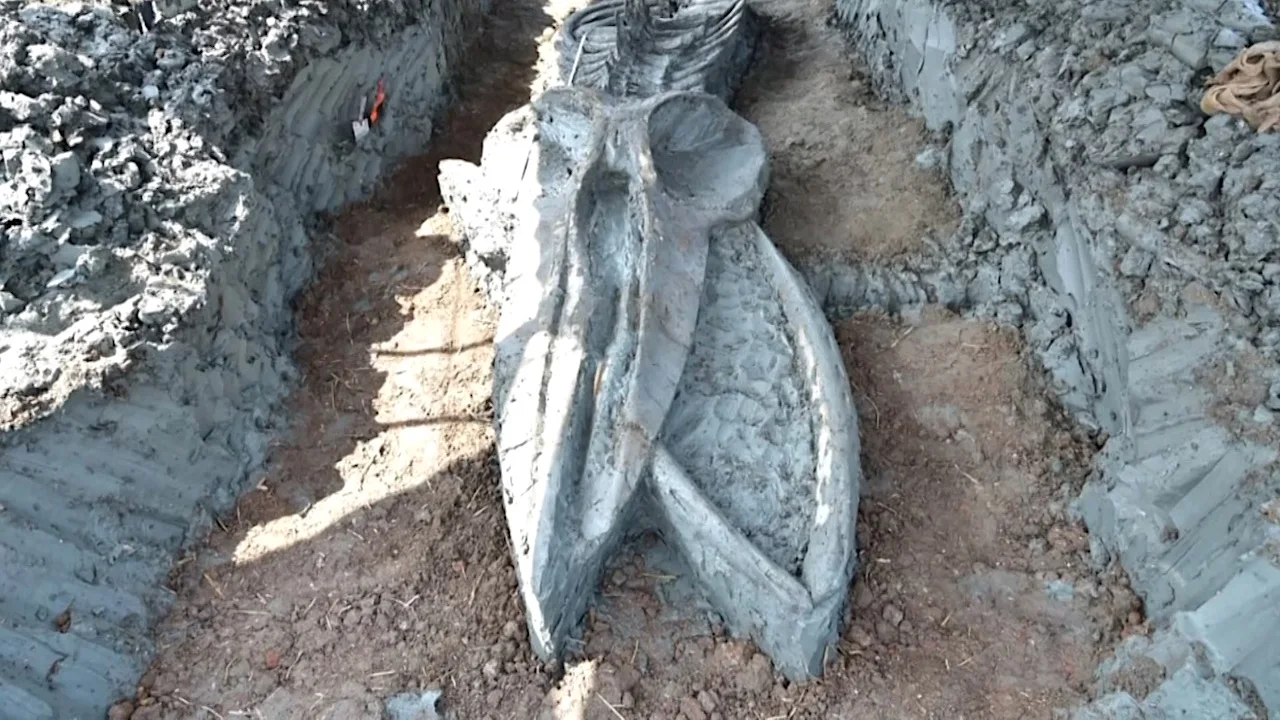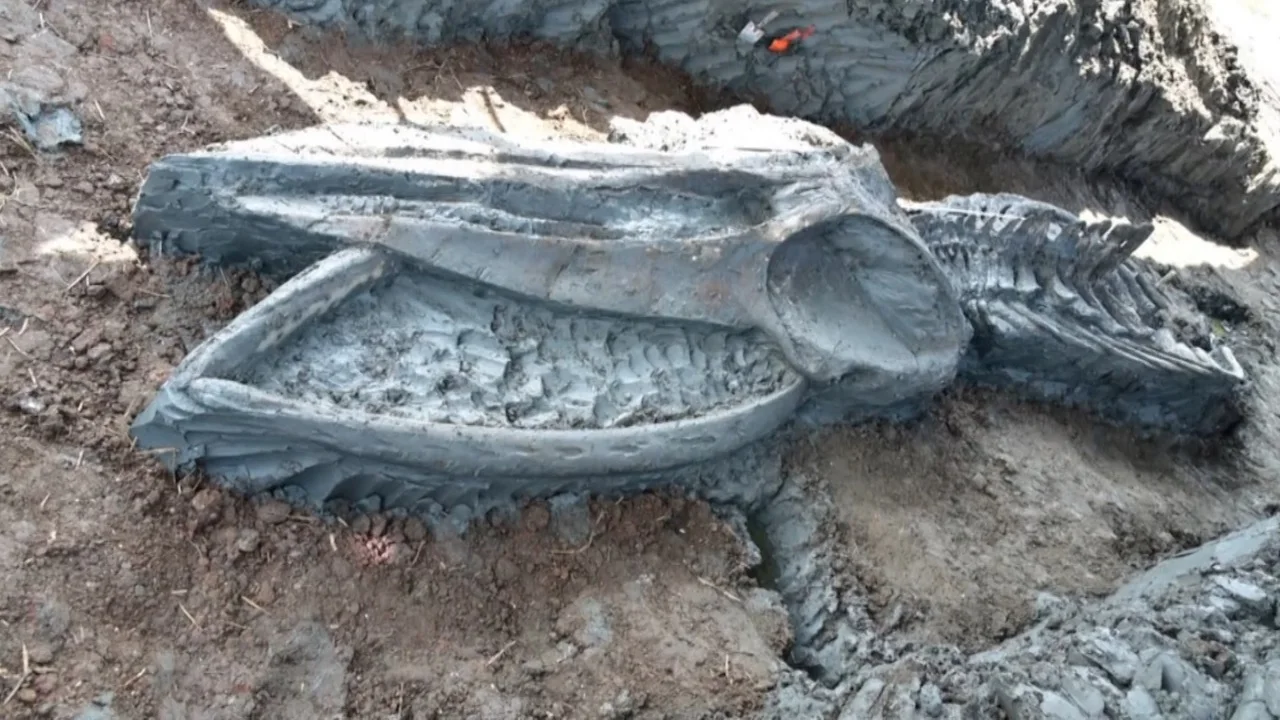
Whale skeleton thousands of years old may hold climate change clues
The bones of the whale, believed to belong to a Bryde, measure 12 metres (39 feet) in size, with a skull that is 3 metres long.
The remains of a whale from thousands of years ago could reveal climate change clues from past sea level rises, scientists say.
According to researchers, the remnants are likely to be of a Bryde’s whale, which was discovered, almost perfectly preserved, in Samut Sakhon, west of Bangkok. The skeleton is thought to be up to 5,000 years old.
SEE ALSO: Ancient human species may have gone extinct because of climate change
The remains were found about 12 kilometres inland, and will allow scientists to examine how sea levels have changed over thousands of years, according to Varawut Silpa-archa, Thailand's natural resources and environment minister. As well, it will help researchers gain a better understanding of the evolution of the species.
Marcus Chua, with the National University of Singapore, told The Guardian that the finding builds upon evidence of “relatively large” sea level changes that occurred 3,000 to 6,000 years ago in the Gulf of Thailand, where the shoreline used to encompass an area several kilometres further inland than the present-day coast.

The skeleton, believed to be of a Bryde whale, is considered to be as old as 5,000 years. Photo: Facebook/Varawut/CBC.
Prior to uncovering the skeleton, only sea deposits with small, fossilized marine shells or crabs had been discovered onshore, but it hasn’t been determined if those fossils had been moved by humans, said Chua.
“A large subfossil whale dated thousands of years ago near Bangkok would provide strong evidence of where the sea was during that time,” said Chua.
The records are highly important since rising sea levels have been directly linked to climate change. “This could certainly bring attention to the issue, and show how and where low-lying areas could be inundated by the sea when that happens,” said Chua.
About 80 per cent of the skeleton has been unearthed and 19 fully intact vertebrae, five ribs, a shoulder blade, and fins have been identified. The bones of the whale measure 12 metres (39 feet) in size, with a skull that is 3 metres long.
As well, the artifact will bolster the researchers’ knowledge of the Bryde’s whale, and other marine life. In addition to the skeleton, scientists stumbled upon preserved items including shark teeth and shells.

The remains will allow scientists to examine how sea levels have changed over thousands of years: Thailand's natural resources and environment minister. Photo: Facebook/Varawut/CBC.
“Scientists could also study the deposits found at the same level as the whale to reconstruct the biological communities present during that time, and compare them to present day systems,” said Chua.
Researchers will verify the precise age of the skeleton sometime this month.
Source: The Guardian
Thumbnail courtesy of Facebook/Varawut/CBC.











